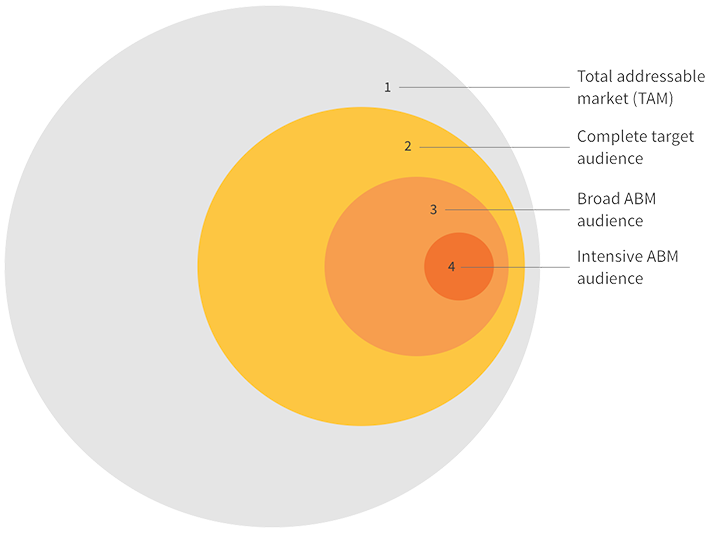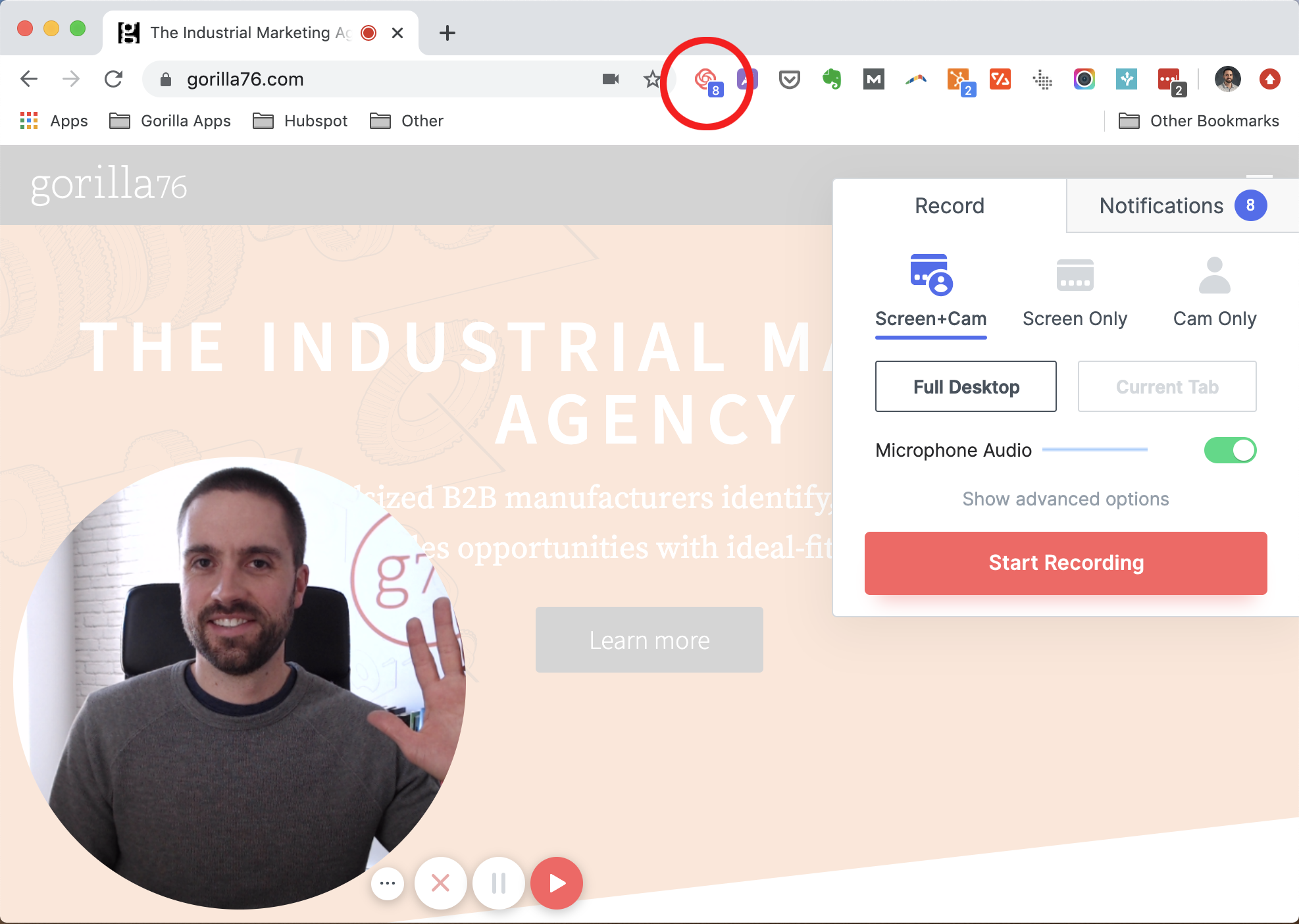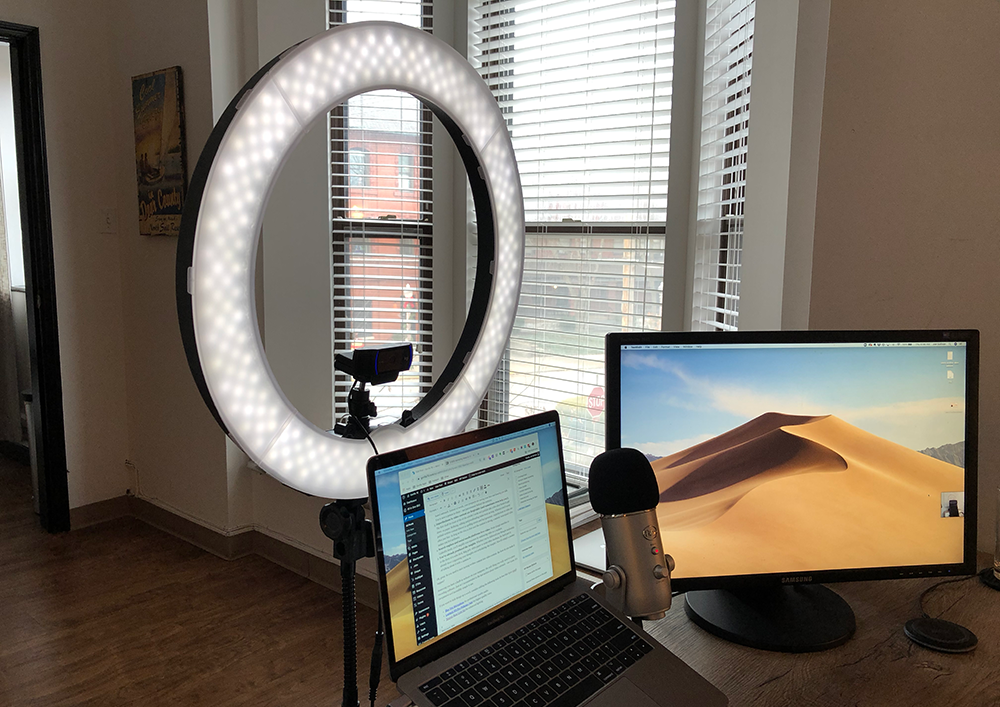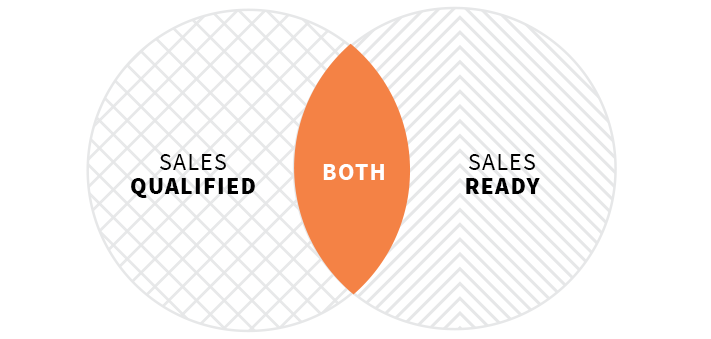
I have a new holiday tradition.
Every December around the same time I dust off my National Lampoon’s Christmas Vacation VHS DVD license in my Amazon Prime account, I’ve also started dusting off (and refreshing) this article you’re reading right now.
This year, though, it’s less of a refresh and more of a total overhaul.
Maybe because of how fast the B2B marketing landscape is changing. Hopefully because our team’s collective thinking has grown and evolved. Probably some combination of the two.
I penned this beast with the help of our Strategy team at Gorilla. It’s our attempt to fill your head with fresh thinking on the marketing front as the new year approaches.
So here’s the list.
The first few are big picture strategies. After that, we get more tactical. Regardless, we’ll cover each in detail.
If you’d like, use this menu to jump around:
Enough intro. Let’s dive in.
1. Define the outcome you want. Then design the plan
In our recent article “Visualizing Your Customer Acquisition Funnel”, we introduced our version of the upside down pyramid:

As you formulate your 2020 strategy, start at the bottom and work your way up.
- What do you need to achieve from a new customer acquisition, revenue or profit standpoint?
- How many Opportunities (or active deals in your CRM) do you need to reach that target?
- How many Sales-Qualified Leads (SQLs) will be required to quote that many deals?
- And where will those SQLs come from? Inbound? Outbound? Paid Media?
Here’s a working PowerPoint / Keynote version of this funnel if you want to fill it out yourself.
But before we move on to number two, I’d like to offer a word of caution.
In this era where everything is measurable, we tend to make nearsighted marketing decisions.
In other words, we become more inclined to do only the things that will pay off quickly.
This way of operating comes with side effects. Most notably, I see neglect occurring in three areas:
- The things we do persistently to grow results over the long term (content, seo, building an engaged audience)
- The investments we make to build brand equity (speaking, guest authoring, the appearance of our website)
- The experiments we run that have potential to yield significant results (trying new strategies, tactics and technologies)
Don’t get me wrong – we all need to pay the bills.
But in 2020, strive to find a healthy balance between the marketing activities that will produce short-term ROI and those that will build equity in your brand and drive long-term, sustainable results.
2. Replace your shotgun approach with a laser focus
What percentage of your Marketing and Sales resources (your investment of both time and money) are focused on attracting and engaging your best-fit types of customers?
Most of us are guilty to accepting checks from anyone willing to write them. And along the way, we lose focus on building a customer base that’s actually profitable.
Take a look at the four-quadrant grid below.

How many of your current customers fall into the top right (where they spend enough, but also buy what you really want to sell them)? These are the types of customers you want to replicate. And for that reason, organizations like theirs should almost certainly be at the center of your lead generation plans in 2020.
So who exactly are your ideal customers? What do they look like at a company level (size, location, industry, technology they use, what they buy from you)?
And who are the buying process influencers (or buyer personas) at those types of organizations (Engineers? Plant Managers? C-Suite? Procurement)?
Instead of trying to speak to everyone in your total addressable market next year, dial in on these right people from the right companies.
Focus leads to messaging that resonates, more engaged prospects and better sales opportunities.
Here’s a tool to help you define and document profiles of your your Ideal Accounts and Buyer Personas.
3. Put your expertise in the driver’s seat
As you move through this article, one theme will keep reemerging:
Thought Leadership.
The idea is simple:
You want your prospects and customers to see you as an expert advisor and practitioner – not just another interchangeable vendor.
But you don’t earn this position in their minds by blasting a megaphone in their ears, yammering about how great you are, what new customers you just won and who won the dodgeball tournament at the company picnic. No one cares.
You earn attention and trust it by demonstrating your thinking around real-life issues that your best prospects and customers care about the most.
If you take our advice from point #2 and create laser focus on the right people from the right companies, your next move is to craft objective, genuinely helpful content that showcases your expertise by:
- Addressing the problems they’re often trying to solve
- Helping them achieve the goals they’re often trying to achieve
- Answering their most common questions (product comparisons, pricing questions, technical issues, etc) in detail
As you build a habit of publishing this breed of resourceful content, you’ll find it has so many applications, including, but not limited to the following:
- To attract prospects that don’t yet know you when they’re searching for these things in Google
- To arm your sales team with content for follow-up emails with active leads
- As the subject matter for monthly or bimonthly newsletters that will keep you top of mind with existing customers and prospects
- As the subject matter for paid media campaigns
Here’s a tool and a few articles to help you plan and execute a winning content strategy in the new year:
- Content Planner Worksheet
- How manufacturers can generate content marketing ideas
- How to extract expert knowledge from your team and turn it into incredible content
- What your content and wet dogs may have in common
4. Nurture (and grow) your existing customers
Sometimes our tunnel vision on new customer acquisition causes us to overlook the low-hanging fruit that’s dangling right in front of our eyes:
Our existing customers.
Assuming that we’re doing our jobs delivering a great product and exceptional customer service, these individuals already know, like and trust us. And that’s 95% of the battle.
So doesn’t it only make sense to focus some of our marketing resources on earning more of their business?
Let’s quickly glance back at this four-quadrant grid from earlier in the article:

In the top left are your high-profit, but low-volume customers. In the bottom right are your high-volume, low-profit customers.
So which of your customers fall into either of these two quadrants?
I bet you can identify a number of ways your organization could create significantly more value for them.
The question is – do they know it?
Here’s our recommendation:
Package up the expert content we talked about publishing in point #3 and deliver it not only into the inboxes of your prospects, but also those of your existing customers at least every 2-4 weeks.
By doing so, you’ll:
- Stay top of mind
- Begin elevating your status from interchangeable vendor to expert advisor
- Demonstrate your expertise in areas they didn’t realize you had expertise
Before too long, you should start seeing a migration of customers from the top left and bottom right quadrants into the top right.
5. Lauch a multi-channel, multi-touch account-based marketing campaign
Back in point #1, I suggested finding the right balance between building a long-term, sustainable inbound strategy and a short-term, less-sustainable (but faster performing) outbound/paid media strategy.
Here’s our advice for the latter.
Simply stated, account-based marketing (ABM) is about building a list of target accounts that closely match your Ideal Customer Profile and designing a collaborative marketing and sales campaign to open doors at those organizations.
In our recent article “All Prospects Aren’t Created Equal: A Tiered ABM Strategy”, we introduced a multi-layered approach to ABM, where you’ll allocate some marketing resources across a broad-reaching target audience. But simultaneously, you’ll deploy a more intensive campaign for the most important accounts inside that audience.

For your Complete Target Audience (circle 2), you’ll use wider-reaching tactics like:
- Pay-per-click (PPC) advertising
- Paid social advertising (LinkedIn, Facebook, etc)
- Content syndication (paid distribution of your content inside of targeted media sources)
For your Broad ABM Audience (circle 3), you’ll layer tactics on top of those, including:
- Automated outreach email sequences to a prebuilt list of specific individuals with specific job titles from specifically identified accounts
- Direct mail to this same set of target prospects
And for your Intensive ABM Audience (circle 4), you’ll introduce more personalized, manual tactics (a collaborative marketing and sales effort) including:
- Phone calls
- Custom videos delivered by email
- Hand-written notes
- More personalized and creative direct mail
The goal of such a campaign is to optimize your marketing and sales resources – creating a balance between 1) reaching enough prospects and 2) spending sufficient time engaging the best ones.
Use our ABM Campaign Playbook – a working Excel spreadsheet designed to help you plan and organize your ABM tactics on a timeline, and in an actionable way – to guide you as you plan your 2020 direct marketing and paid media strategies.
6. Hyper-target your media spend
Once upon a time – long, long ago (like in the early-to-mid 2000s), “targeting” meant choosing a relatively broad audience by some combination of industry, geographic region and maybe demographic.
Today it means choosing people with specific job titles at specific companies who have taken specific actions that indicate specific intent and needs.
Hyper-targeted paid media platforms (like those offered by LinkedIn and Facebook) allow you to mitigate waste in your ad spend by displaying ads only in front of micro niche audiences that you’ve specified. And by syncing with your automation software (like HubSpot), you can also target based on actions these types of individuals have taken on your own website.
For example, you could run a custom ad targeting:
- Individuals in Missouri, Illinois and Wisconsin….
- Who work at companies in Machinery and Industrial Automation…
- That employ 51-500 people…
- Who have job titles that are either Plant Manager, Plant Operations Manager, Plant Engineer or Maintenance Manager…
And you could pair that with a retargeting campaign to reengage individuals from:
- A predefined list of companies…
- Who have visited your website in the last 30 days…
- And have looked at one of three big-ticket product pages
For more advanced marketers out there, technologies from companies like Terminus and Influ2 let you dial in even tighter – targeting specific individuals with your advertising spend.
It’s gettin’ crazy out there.
7. Begin your foray into personalized video
Not so long ago, video marketing was limited to big-budget, professional-grade productions that could only be implemented by highly-skilled technical pros.
But over the last few years, the rapidly growing accessibility of video-based tools has created an ocean of opportunity. From hardware on our phones and built-in desktop webcams to simple, affordable software tools like Loom and Vidyard, the technology barriers have come down significantly.
There are countless ways to use video in your sales and marketing mix. In this article, I’ll cover two good starting places for you.
First up is the personalized outreach video.
How many cold emails do you get every week from someone tying to sell you something? And how many of those warrant a reply other than “unsubscribe”?
95% of prospecting emails are canned – sent to the masses via automation. They’re filled with paragraphs of text, all about the sender rather than the recipient, and almost never creating value. So you stash them away forever in a special filing cabinet, just like Michael Scott would.
Let’s not be like those guys.
Video-based emails do a few things for you that are tough to achieve through text-driven outreach:
- They break through the clutter
- They humanize you by putting both a face and a voice to your name
- They allow you to say (and show) things that are hard to do without being in a room with the person on the receiving end.
Here’s a real-life example of a custom prospecting video I recently filmed:
Take note of a few things I did here:
- I offered some real tips, stemming from my area of expertise
- I drew on a common connection (we both come from Milwaukee)
- I didn’t hard sell anything, but opened the door to a conversation
What could your version of this look like?
The disadvantage of personalized video is of course the lack of scalability. But I’ve found that creating value (and meaningful dialogue) with a select number of great-fit targets bears more fruit than spamming the masses.
From a technology standpoint, this might all sound a little intimidating, but a tool like Loom (my gadget of choice) makes it super easy.

Here’s how it works:
- Install the Chrome extension
- Click the button (circled in the screenshot above)
- Choose to record yourself on webcam, your screen or both
- Start talking
When you’re done, Loom will store your video in the cloud, where you can simply copy a link to paste into your email.
Once you’re comfortable with video as a medium, you’ll find all kinds of other places to use it in your marketing and sales operations – from follow-up emails, to summaries of quotes you send prospects to thought leadership content.
And that leads us into #8…
8. Start turning your written content into video content
I can give you a whole bag of reasons to translate your existing thought-leadership content into video format. But this article is long enough already, so here are my five most compelling arguments:
- Different people prefer to consume content in different ways. And those preferences are overwhelmingly shifting toward video. This article by Wordstream compiles 37 supporting statistics.
- Video humanizes you. This is the same point I made in the previous section about video-based outreach. Instead of words, your prospects are seeing your face and hearing you talk. You’re now a person to them – not just someone behind the curtains.
- Imperfections in video content are forgivable (and sometimes even help you!). The first draft for most of the of the articles I write usually takes a few short hours to get down on paper. Refining, editing and proofreading takes twice as long. Whereas you’d never publish written content littered in spelling errors and bad grammar, imperfections in video are often just fine. As long as the idea is clear and the content is strong, a natural, unscripted video makes you feel authentic.
- Search engines and social media platforms love video. From Google searches to LinkedIn feeds, you’ll amplify your exposure by embracing video as a medium.
- You’ve already produced the insights. Whether you’ve delivered your thought leadership in the form of a sales deck, blog post, white paper or some other medium, the hard part is already done (organizing your thoughts and articulating the insight). Now it’s simply a matter of talking about it with a camera on.
OK, great. So you need to start turning written content into video content. But how do you make it happen?
Assuming you have a built-in webcam on your computer, the only thing you really need is a piece recording software. Just as I recommended in the last section about video outreach – use Loom. It’s inexpensive and incredibly simple to use.
If you want to kick things up a notch, consider adding the following tools for less that $300 total:
- Blue Yeti Microphone for professional-quality audio
- Logitech HD Pro Webcam C920 for higher quality video
- Neewer Ring Light Kit for enhanced lighting
Here’s what my set up looks like with those three pieces of hardware:

Once you’ve starting producing these videos, you can use them in so many places:
- On your company blog
- On YouTube (create a channel for your organization if you don’t yet have one)
- In your LinkedIn, Facebook, other social channel feeds
- In email newsletters to your existing customer and leads
- In your email signature
- In follow-up emails to prospects
I could go on. But there’s still a lot of reading to do down there. 👇
9. Repaint or rehab your website (instead of defaulting to rebuild)
“We need a new website.”
I’ve heard this more than anything else in 13 years of conducting exploratory calls with potential future customers.
But after a conversation or two, what we usually agree upon together is that what they want is a new website. What they need are things like:
- More visibility in front of the right companies
- More at bats for their sales team with the right people from those organizations
- A higher conversion rate on leads to sales
- A stronger brand image
Sometimes a total website overhaul is the answer to these problems. But a lot of times, it’s not. At least, not right away.
I like to draw an analogy between houses and B2B websites.

When your house needs some work – whether than means a fresh coat of paint, new plumbing or a reconfigured layout – you don’t just bring in the wrecking crew by default. You identify the source of the problem and you address it. The house may not be perfect. But it doesn’t have to be torn down either.
Here are some concise guidelines for how many resources to throw at your website project (and when each of three approaches makes sense).
Repaint when:
- Lead generation is much lower on your priority list than a premium brand image.
- You’re looking to be acquired and have a PE firm or board of advisors breathing down your neck to modernize the brand in front of suiters.
Rehab when:
- Your website is no more than a digital brochure that talks about how great you are. In this case, put on an addition – a Knowledge Center that houses helpful, problem-solving, question-answering content for your key buyers.
- You’re getting significant traffic, but converting few into leads. In this case, focus on conversion optimization.
- Your budget is limited, but you want to start moving in the right direction. Focus on the 20% of changes that will produce 80% of results. And keep chipping away at it over time.
Rebuild when:
- You have a significant budget in hand to do it right.
- You don’t need results too quickly (because a website doesn’t get built overnight).
In our article – “If your website were a house: To repaint, rehab or rebuild” (and in my guest podcast appearance on the B2B Growth Show as well) – we explore this topic in depth.
10. Give your “Contact Us” button a proper funeral
Take a peek at the top right corner of your website.
There’s almost certainly a button or link that says “Contact Us” or “Request a Quote”.
What a perfect call to action for your website visitors who are ready to, well…. contact you or request a quote!
But here’s the problem.
For most of you, that only accounts for about 4% of your visitors. You might as well just stick a button like this up there:

We need to stop treating our website visitors like people who want to be sold to.
They’re on your website because they’re trying to:
- Get questions answered
- Solve problems
- Figure out how to achieve goals
- Investigate solutions
- Find experts to help them do those things
(Not hear your sales pitch).
So let’s meet them where they are in their respective buying processes rather than assuming they’re ready to make a buying decision right now.
Supplement your “Contact Us” and “Request a Quote” calls to action with some that encourage visitors to:
- Subscribe to a bimonthly newsletter that will consistently deliver helpful insights
- Download a white paper that covers a topic your best customers and prospects care about deeply
- Use an ROI calculator you’ve built
- Register for an upcoming webinar or lunch and learn
Any or all of these can serve as lead generation tools for you. They open up the door to real, human conversations. But they do so in a non-salesy way that simultaneously creates value for your visitors.
Our article “Rest in Peace, My Dear Contact Us Button” takes a deeper look at this subject if you’d like to read on.
11. Use lead intelligence to guide your decisions
There’s a big difference between a sales-qualified lead and a sales-ready lead.
The former is one that checks the boxes on your ideal customer profile. The latter is one that’s showing buying intent. As marketers, we want to dial in our efforts at the intersection of those two.

The challenge often lies in our ability to recognize intent.
And that’s where lead intelligence tools (like those that come baked into software like Hubpsot) come into play – giving you a window into the buyer’s journeys of specific individuals.
Here’s an example.
Let’s say that Sales Qualified Lead #1 has taken the following actions on our website:
- Visited an article we wrote about content marketing
- Navigated to one other article about SEO
- Left the site
Now let’s say Sales Qualified Lead #2, on the other hand, took this path:
- Visited that same article about content marketing
- Read three more articles on the topic
- Read two case studies about content marketing success we had with other clients
- Visited our Request a Consultation page (but didn’t fill out the form)
- Looked at the bios of our copywriters
- Visited the Request a Consultation page again
- Visited our Who We Help and How page
I apologize for the rhetorical question, but which of these two leads do you think I’m going to spend my time engaging in a conversation?
What I can gather about Sales Qualified Lead #2 is that he/she is likely in the market for content marketing services. I can use that simple nugget of information not only to prioritize my time, but also to frame the conversation around what appears to be his/her area of interest (content marketing).
A lot of organizations who pay hundreds of dollars a month for marketing software like Pardot, Hubspot or ActOn don’t even realize these lead intelligence tools are available. And even those who are aware rarely use the tools productively.
Spend some time getting to know the ins and outs of your marketing automation software. Then help your Sales team learn to harness the information that can help them better qualify leads and prioritize their time.
12. Book your first Marketing-Sales alignment meeting
According to a study conducted by Marketo, companies with well-aligned Sales and Marketing teams see a “209% stronger contribution to revenue from marketing-generated leads”
Yet these two departments so often operate in their own silos. Marketing does their thing. Sales does theirs.
Here’s a longer article we published about how to break down that wall between Sales and Marketing.
But if you simply want to take the first step in the right direction, this is it:
Once per month for 60 minutes, your Marketing and Sales teams will meet and follow this agenda:
- Review open and closed opportunities (15 mins). Which opportunities have closed over the past month? Which didn’t close and why? Wrong fit? Price tag? Competitor offerings? Which are still open? And what’s preventing them from moving forward?
- Review new leads (15 mins). How closely do recent Marketing-generated leads match your ideal customer profile? Where did they come from? (Look at the data!)
- Prioritize and adjust (15 mins). What adjustments need to be made over the next 30 days? Which opportunities should be given special attention?
- Assign responsibilities (15 mins). What will Marketing do to help Sales over the next month? And vice versa? What outcomes are we going to achieve together before next month’s meeting? And what specific activities will happen to get us there?
Tear down that wall between Marketing and Sales and good things will start happening.
13. Partner with some credible industry organizations
My sister Molly is an accomplished pastry chef in Milwaukee (no, of course I’m not biased!). A few years ago she opened up her first corner cafe (Miss Molly’s Cafe & Pastry Shop) in the neighborhood we grew up in.
Anyone close to Molly already knew that her food was incredible. But simply opening up the doors to her new cafe was far from a guarantee than anyone other than her friends and family would ever step inside.
In the first year after her grand opening, Molly found herself being covered by all the foodies in the city. She was in the newspapers and on the local news time and again.
A couple short years later, lines stretch to the door at breakfast and lunch and she’s looking at opening a second location.
So what lesson can Miss Molly teach a B2B company in the industrial sector (other than producing an exceptional product and working your butt off, of course)?
This one:
Your audience is a lot smaller than those of the media sources (or industry organizations) that influence your audience. So figure out how to leverage them in a way that benefits both of you.
Here are a few ideas for how to do it:
- Guest publish in industry trade journals. The media sources in the verticals you serve are often hungry for content. So pitch them editorial content ideas that create value for their respective audiences. They’ll often be happy to publish it (and at no cost to you!).
- Co-host a webinar. We recently hosted a joint webinar with Industry Today. The topic was “Industrial Marketing in a Changing Buying Environment“. Industry Today brought the big audience. We brought the resourceful, expert content. What’s your version of this? And what partner could help fill the seats?
- Conduct a joint research report. Last year, IEEE Global Spec (an industrial sector media company) teamed up with Content Marketing Institute and Marketing Profs (a marketing training organization) to publish a fantastic report titled “Manufacturing Content Marketing 2019: Benchmarks, Budgets, and Trends“. (In fact, you might want to grab a copy yourself!). So what kind of study or research report could you produce for your audience? And who could be your partner?
Not only will partnering with an industry organization expose you to a much larger percentage of your target audience. Doing so will lend credibility to your brand name.
Get out there and form some strategic alliances.
So there you have it
Whew! That was a mouthful.
We hope it was helpful.
And if you feel like you could use some outside help planning your strategy, consider requesting a consultation.
Best of luck in the new year!